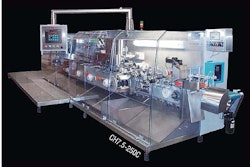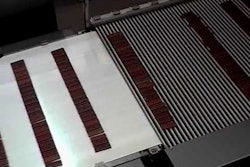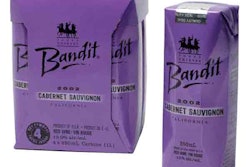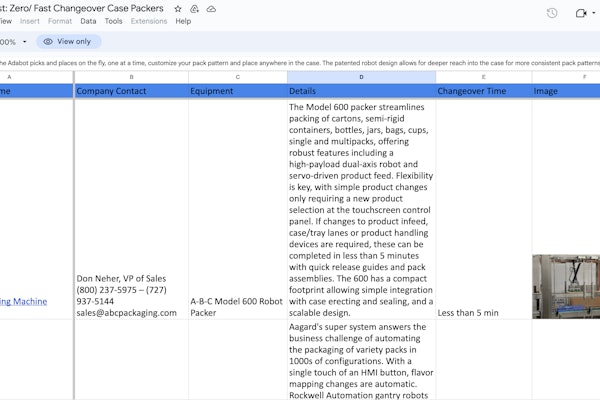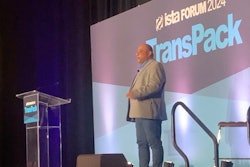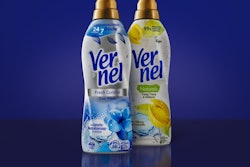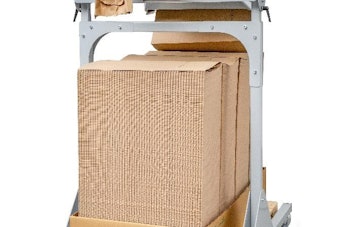
Anyone involved in package creation should take note of two significant trends occurring in the battleground that is the store shelf. First, the steady growth of retailer-brand products in food and beverage has begun to create a “halo” effect over non-grocery categories. Second, mega-retailers and specialty chains are stealing market share from traditional supermarkets, strengthened with shelves displaying an abundance of brands exclusive to their stores.
These two developments all point to growing competition for shelf space and the need for the package to work harder as a marketing tool.
Private-label products have been gaining popularity steadily in recent years, but their allure is now gaining a foothold in categories like health and beauty, home office supplies, household goods, and home improvement, says Iposos MORI, a market research firm that recently concluded independent consumer research for the [b]Private Label Manufacturers Association[n] (PLMA). The study reports that 20% of consumers frequently purchase retailer-brand products in these categories, and sales are growing across all retail channels, according to Iposos MORI. The company surveyed 1,017 U.S. consumers during 2006—adults who are responsible for their household’s main grocery shopping, including food, household products, personal care, and health and beauty items.
This trend is impacting packaging significantly, says Brian Sharoff, PLMA president. “The packaging has to pay as much attention to what the retailers are doing with their private-label programs as with what product manufacturers are doing with their branded programs. Packaging for national brands creates a product image that stands out amid the clutter. But packages for the retailer’s brand are represented in anywhere from 20 to 25% of the SKUs [shelf-keeping units], so the clutter for the retailer’s brand is already uncluttered. So packagers need to look at the store as the brand and not on a category-by-category basis. Look at private label as a total impact on the whole store.”
According to the study, 57% of consumers declared that packaging for private-label grocery brands is as good as the packaging for national brands. That perception is beginning to take hold in categories like household goods, too, through packaging that is reflecting greater knowledge about how consumers shop.
The case for household products
One example is playing out at CVS/pharmacy, which has been reworking the packaging for many of its private-label lines. Globe Electric Co. (www.globe-electric.com) supplies the materials and creates the designs for CVS’ Round the House (RTH) brand of household products, from light bulbs to power cords, in paperboard cartons and sleeves, clamshells, and blister packs. Globe worked with CVS to restage the brand by emphasizing the value of each product relative to its national-brand competitors.
The packaging accomplishes this objective in several ways. First, RTH packaging displays an uncluttered front panel, moving technical product information to the side or back panels. Second, RTH packaging is designed around a visual hierarchy that focuses on the critical information consumers want to know: “For light bulbs, it’s ‘I need this bulb shape, in this wattage’,” says Lisa Zentner, Globe Electronic’s director of marketing.
Product communication on front panels of the light-bulb packaging consists of a large product photo, a one- or two-word description of the bulb, and color-coded circular icons in the upper right corner stating the bulb wattage. For example, green circles signify the 60-watt bulbs. A red circle expresses the cord length on sleeves holding electric power cords.
With these changes, RTH has a better chance of gaining shopper attention in categories where packaging for competing brands can appear cluttered, technical, and sometimes confusing to consumers, Zentner explains.
“The packaging across the RTH line tends to be very simple because you only have a few seconds of the consumer’s attention. You have to tell them in an instant what’s there, or you have lost them,” Zentner says.
Globe Electric also took steps to make sure the brand’s appearance remains consistent as new RTH products are developed. Globe Electric developed a style guide to help CVS manage the brand’s visual and structural appearance for each product and package format.
Globe Electric extends this same general approach to private-label package design for brands exclusive to Lowe’s and BJ’s Wholesale Club. Store brands in categories beyond food and beverage are making inroads against national brands, Zentner says, in part by gauging the competition’s packaging. “We know what they do well and what they don’t do well,” she says.
The packaging approach for Round the House products at CVS dovetails with the Ipsos MORI study results. Consumers said that packaging plays an integral part in conveying an impression of product quality. “However, if the product inside doesn’t meet consumer expectations or if the packaging promises something that the product doesn’t deliver, then consumers won’t buy it again,” PLMA’s Sharoff notes.
Impact of shopping patterns
On the retailing side, the PLMA study found that 80% of consumers acknowledged they shop regularly at supermarkets. But 45% said they also shop at supercenters and warehouse clubs. When it comes to trips to one particular retail chain, one out of six consumers identified Wal-Mart as their main destination for grocery shopping—equal to the total of the next three chains.
The survey revealed growing penetration for specialty food stores like Whole Foods and Trader Joe’s, which carry extensive private-label selections. The survey mentioned that these developments could benefit retailer brands, especially if the packaging makes it easy for consumers to do a comparable price-value relationship with national brands.
Following are some of the study’s additional findings about the growth of private-label brands:
* Nearly 50% of the respondents said that as many as one in four of the items in their shopping carts are typically retailer-brand products. Another 25% of the respondents said half or more of the products in their baskets are private-label products. On average, 32% of their product selections were private-label brands.
* 41% of shoppers identified themselves as “frequent” buyers of retailer brands. In 2001, the last time the survey was conducted, 36% of the surveyed consumers described themselves that way.
* Nearly 70% of the respondents agreed that the private-label products they purchase are as good, if not better, than their national-brand counterparts. Five years ago, about half of the respondents agreed with that statement.
* Middle- and higher-income consumers are significantly more likely low-income shoppers to increase their purchases of private-label products in 2007.
